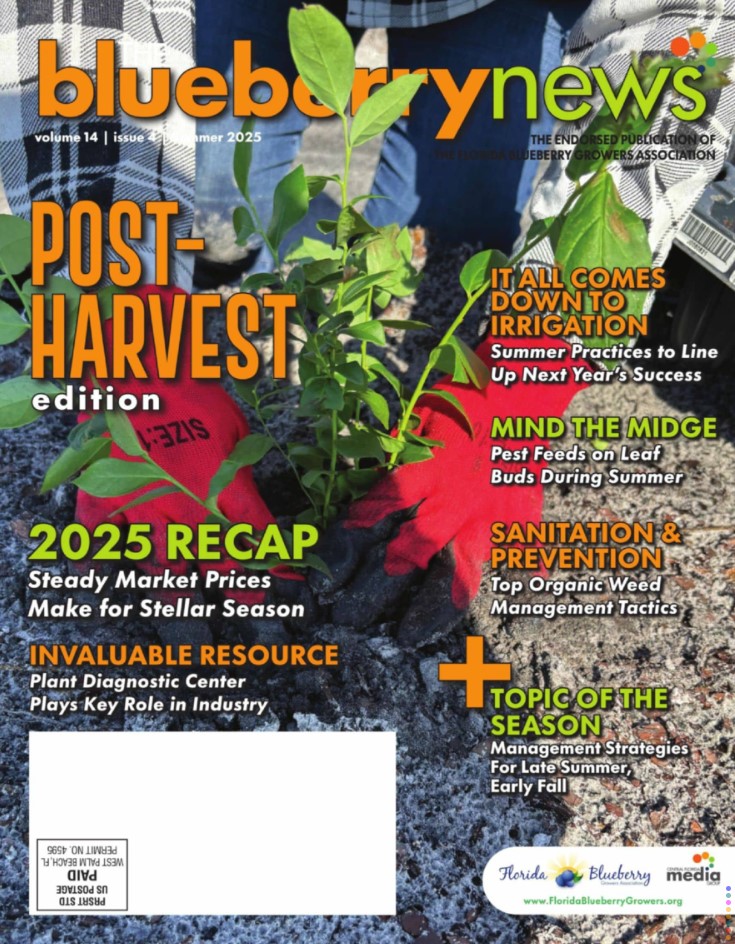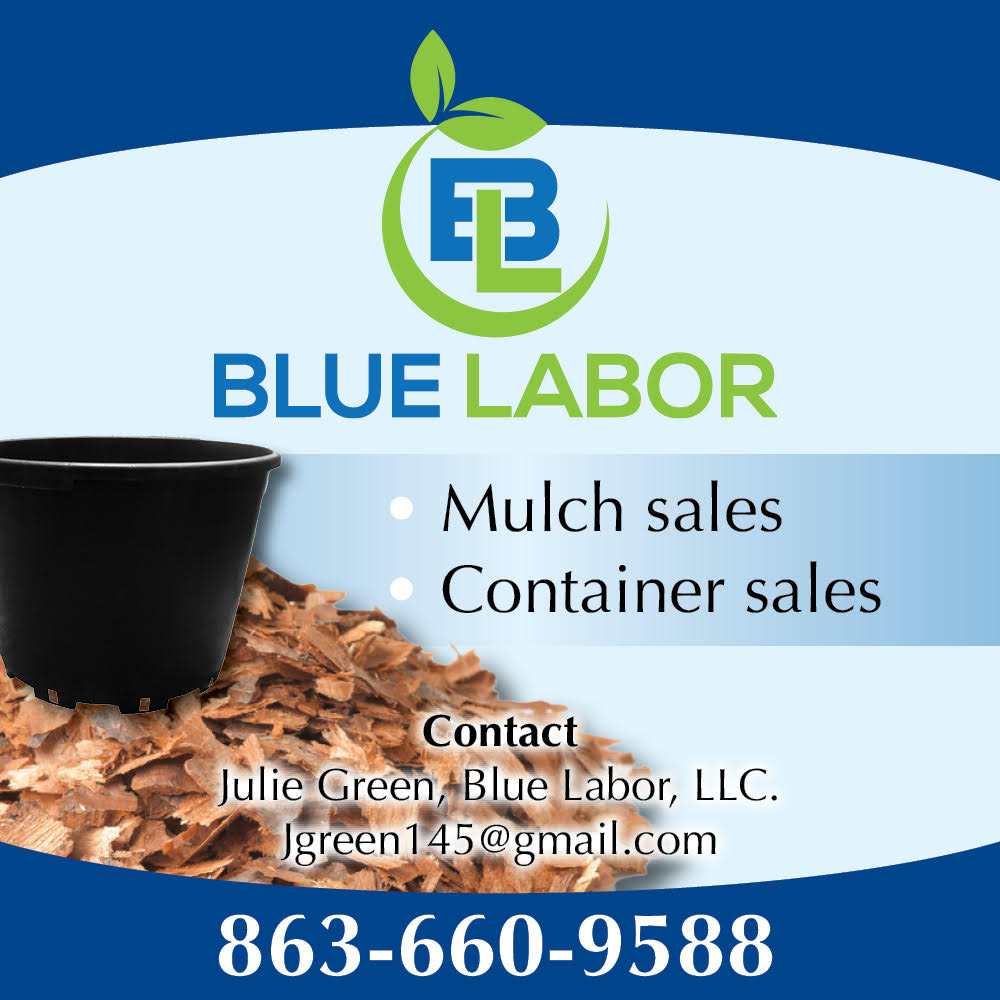Hedging and topping the Southern Highbush Blueberry can help minimize stress, shape plants, control size, and promote growth
Pruning is an essential practice for commercial blueberry production. Pruning can be used to minimize plant stress, shape plants for mechanical harvest or other operations, promote growth of new fruiting wood, balance reproductive and vegetative growth, reduce incidence of pests and diseases, control plant size, and promote new cane development.
Young Plants
With the traditional deciduous production system, flowers and fruit are usually removed from plants during their first year in the field to encourage plant establishment and rapid vegetative growth, which will increase future fruit production. Most fruit and flowers can be removed by cutting the plants back to about 60 to 75% of their original size. Weak twiggy growth often found at the base of the young plants can be removed at this time. Transplant stress is also minimized by temporarily reducing the canopy size and plant water requirements until the root system is established. Some growers in the evergreen system harvest plants one year after planting.
If machine harvesting is likely to occur in the future, training plants to have narrow crowns should begin during the year of planting. Milk or juice cartons can be used to assist in the development of narrow crowns and can also protect young plants from herbicide spray drift (Figure 1). Narrow crowns as seen in Figure 2 will reduce ground losses during machine harvesting and increase machine harvesting efficiency compared to plants with wide crowns. After cartons are removed, continued selective pruning will be needed to maintain narrow crowns.
Mature Plants
The major pruning operation for mature blueberry fields in Florida occurs soon after fruit harvest is completed (late summer pruning may result in late fruit maturity the following season). This pruning operation, referred to as postharvest or summer hedging and topping, is usually done mechanically because of high labor costs. Hand-held hedge clippers may be used on smaller farms but more often tractor-mounted hedgers or self-propelled, over-the-row, pruning equipment is used due to increased speed and efficiency (Figure 3).
Plants are typically topped at between 40 and 48 inches and the sides are trimmed to prevent encroachment into the row middles. Hedging and topping maintain plants at a manageable size, and help stimulate a strong summer flush which contains much of the fruiting wood for the next year’s crop. While most cultivars respond well to summer hedging and topping, it should be noted that “Chickadee” has responded with weak regrowth. For “Chickadee,” light tipping is preferred to standard hedging and topping.
The open wounds created by hedging and topping are potential infection sites for fungal pathogens such as Botryosphaeria (stem blight). Hedging and topping should be followed immediately by an application of a broad-spectrum fungicide spray such as Captan.
In Florida, flower buds on summer flush wood initiate and develop during late summer and fall. Healthy fall foliage is needed for the conversion of vegetative buds to flower buds and for their continued development. Research has shown that early fall defoliation can inhibit flower bud initiation and subsequent flower bud development, as well as fruit yield the following spring. The summer flush should remain healthy with leaves attached at least through the first half of November (deciduous system) or throughout the winter (evergreen system).
Individual blueberry canes lose their vigor and productivity as they age. This problem can be addressed by using a procedure known as cane renewal pruning. In general, cane renewal pruning should begin about 4 to 5 years after planting. About ¼ of the oldest canes (usually one or two canes) are removed each year by cutting back to the crown, or to a strong lateral. Cane renewal pruning stimulates the growth and development of new canes which are more productive than older canes, thereby lengthening the productive life of blueberry plants. It also allows for better light penetration and air movement in the canopy. During this time, dead, weak, or low-growing shoots can also be removed. Cane renewal pruning is usually done during the dormant season, but can also be done along with summer hedging and topping.
For more information, see UF EDIS Publication HS1359, Pruning Southern Highbush Blueberry in Florida (https://edis.ifas.ufl.edu/pdffiles/HS/HS135900.pdf).
by JEFF WILLIAMSON, Professor, Horticultural Sciences Department, UF, &
DOUG PHILLIPS, UF/IFAS Blueberry Extension Coordinator





